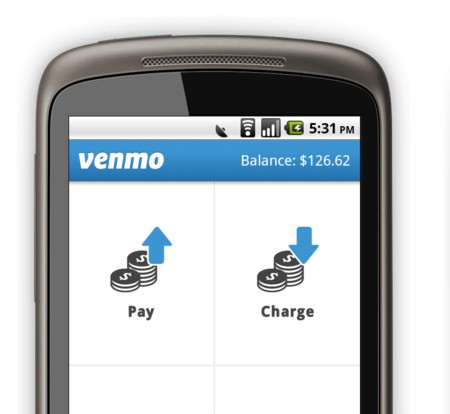When our church started receiving offerings through Venmo
The new givers are great. Their comments about why they give are even better.

In planting a church for spiritual refugees—especially Bible Belt millennials who experienced the churches of their youth as boring, irrelevant, exclusive, and even painful—I’ve had to learn a lot of new things. Pastoring traditional congregations for two decades was terrific preparation in some ways, but the difference is never more apparent than when my quirky-as-all-get-out community of belonging in Jesus’ name passes the offering plate.
And we do. We announce at the top of each Sunday worship service that the heart-shaped baskets (bought on clearance at World Market) will be coming through later on. We already know that we aren’t going to collect a bunch of handwritten checks and neatly folded twenties. When was the last time you met a young adult with a checkbook? Or cash on hand?
Instead, we offer several modes of e-giving, including bank-to-bank electronic fund transfers and a suite of PayPal possibilities. There are iPads in the back of the worship space where givers can slide their debit cards and sign with their fingers. We encourage everybody to pick up a laminated card to put in the basket later. The cards say, “I shared electronically, thanks be to God!” or “I shared thoughts and prayers, thanks be to God!” That way, everybody has something to give. “The gifts of God for the people of God! Thanks be to God!”
But recently a twentysomething in my church wanted to send five bucks to pay the church for something small. I think we were collecting money for a birthday card. But PayPal takes a chunky fee for every transaction, even for nonprofits, so that’s not very efficient. “I wish I could just Venmo it to you,” the twentysomething said. And I said, as I often do, “Huh?”
After Venmo was explained to me, I handed over my laptop and said, “Make it so.” Fifteen minutes later, Galileo Church had dozens of “friends” on Venmo and had received its first gift— and we had “liked” it and commented by giving our thanks.
Venmo is a social media app. It’s for friends to share money with friends, electronically zapping it from one bank account to another. And depending on your privacy settings, anybody who is your friend can see all your Venmo transactions in a continuous feed.
Let’s say you and a friend are studying together, and you decide to split a pizza; your friend pays and you send your friend a few dollars for your half, along with emojis of pizza and books, at 11 p.m. Now anyone who is friends with either of you knows that you had a late-night cram session and got hungry, and pizza was the remedy. (They won’t see the amount you sent or spent.) They can “like” the transaction and comment: “Finals! Ugh!” or “Good work, you two!”
So what happens when the church goes Venmo? We got new givers almost immediately. People who had never given to our church before friended us and sent contributions. And some regular givers moved their giving from a service with a fee to this free-for-now app. That’s a 2.9 percent savings on fees that we’re glad to have.
But more important than that are the comments the Venmo givers include with their gifts. With every note and emoji, they express what they believe the church is (and should be) spending money on. Consider these comments, taken from Galileo Church’s Venmo account:
“For love and justice”
“So our village can keep providing what our people need”
“Spreading God’s love”
“Just trying to help keep the lights on”
“Because I can tithe even when I can’t attend”
“To help with the things needed to take a stand”
“For them: the resources to continue the ministry that means so much in a world that needs what we’ve got. For me: the satisfaction that comes with the spiritual discipline in tithing.”
And then there are the ones who communicate best with emojis: rainbows and praying hands, multicolored hearts and jazz hands, peace signs and raised fists, all showing the giver’s sense of connection to the church’s work of justice and mercy.
This is definitely not your parents’ offering plate. Some of these notes respond to specific sermons or liturgies (showing palm tree pics for Palm Sunday, bread and wine for communion). Some acknowledge a habit of regular giving loosely called “tithing.” But I am especially affected by the ones who name the church’s highest aspirations—justice, mercy, love, compassion, help, hope, belonging.
These are not designated gifts, like the checks that come with strings attached, for use only in specific programs. Venmo gives Galileo’s givers a platform from which to make public their understanding of the reasons for the church’s existence. Why does the church need or deserve your generosity? Why, against the strong current of a greedy, anxious, materialistic culture, should you hand over hard-earned dollars into the church’s hands? For what purpose should the church spend these resources, as a good steward of your good gifts? Venmo presents a gold mine of public testimony about what a new generation of adults expects from the ecclesial communities they are helping to build.
There are, of course, questions to raise about the public aspect of social media giving. Didn’t Jesus criticize those who gave loudly and expected praise for their faux generosity? But the widow who gave her pennies used the same public platform—the treasury box at the temple gate that anyone could observe—and was praised for her selflessness. Galileo’s givers are mostly working the gig economy, or working as underpaid teachers or hourly wage laborers. Their mites don’t make a lot of noise going in, but they are not ashamed to share according to what they have been given. Thanks be to God!
If Venmo giving raises some questions, it answers others. It obliterates the debate about whether the pastor should be privy to the contribution records of individual givers. We are learning new things about our kids’ and grandkids’ comfort with living life out loud, for all the world to see. And we are learning what it means to be in community with people whose generosity we have witnessed. Secrecy about giving is passing away as an ecclesial social norm, and with it the ability to wield influence without investment.
One more factor that I suspect is important in Venmo generosity: immediate and joyful thanks expressed by the church to each giver. Each gift sends a little ding to my phone, and it feels important to respond as quickly as I would to a Facebook notification or a text. (The church treasurer helps with this as well.) It’s another lesson from church planting: the pace of input and feedback is going to be much faster than that of the yearly, IRS-mandated giving statements that ploddingly reach givers through the U.S. Postal Service.
Most of our millennial givers are not itemizing their tax deductions, so that yearly letter of record is not truly useful. We send them, but we don’t rely on them as our main mode of appreciation. We have come to believe that good gifts, freely given, deserve a quick little celebration of gratitude. With a snappy response and a couple of heart emojis, the church models thanksgiving for all who are watching our social media receipts.
Sharing money via social media apps is just one among myriad ways that new generations are building communities of belonging in Jesus’ name and communicating with each other about the church’s highest purposes. Venmo is a new wineskin for new wine, and I’m happy to learn all the new things it’s teaching me.
A version of this article appears in the print edition under the title “When our church went Venmo.”





